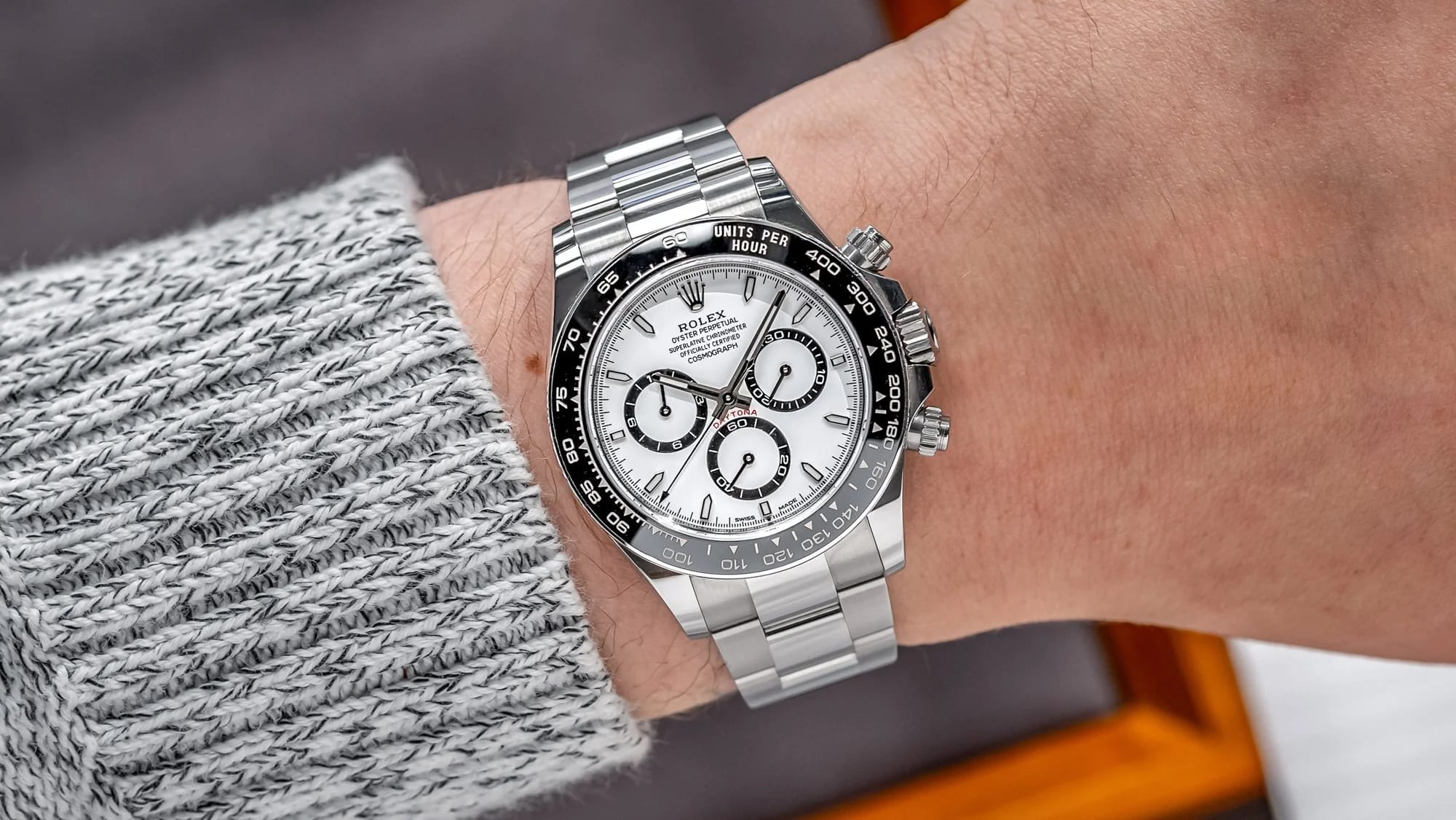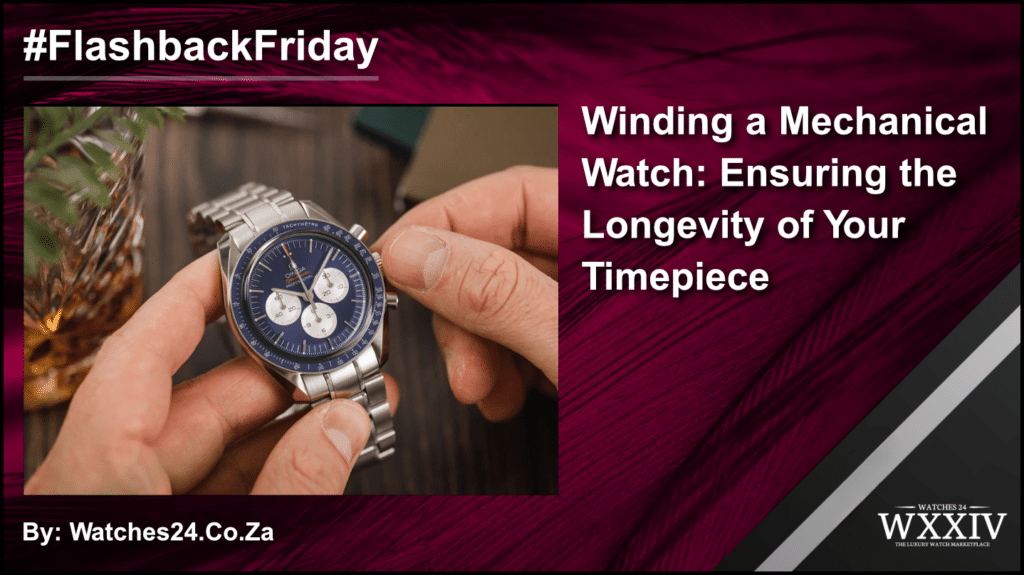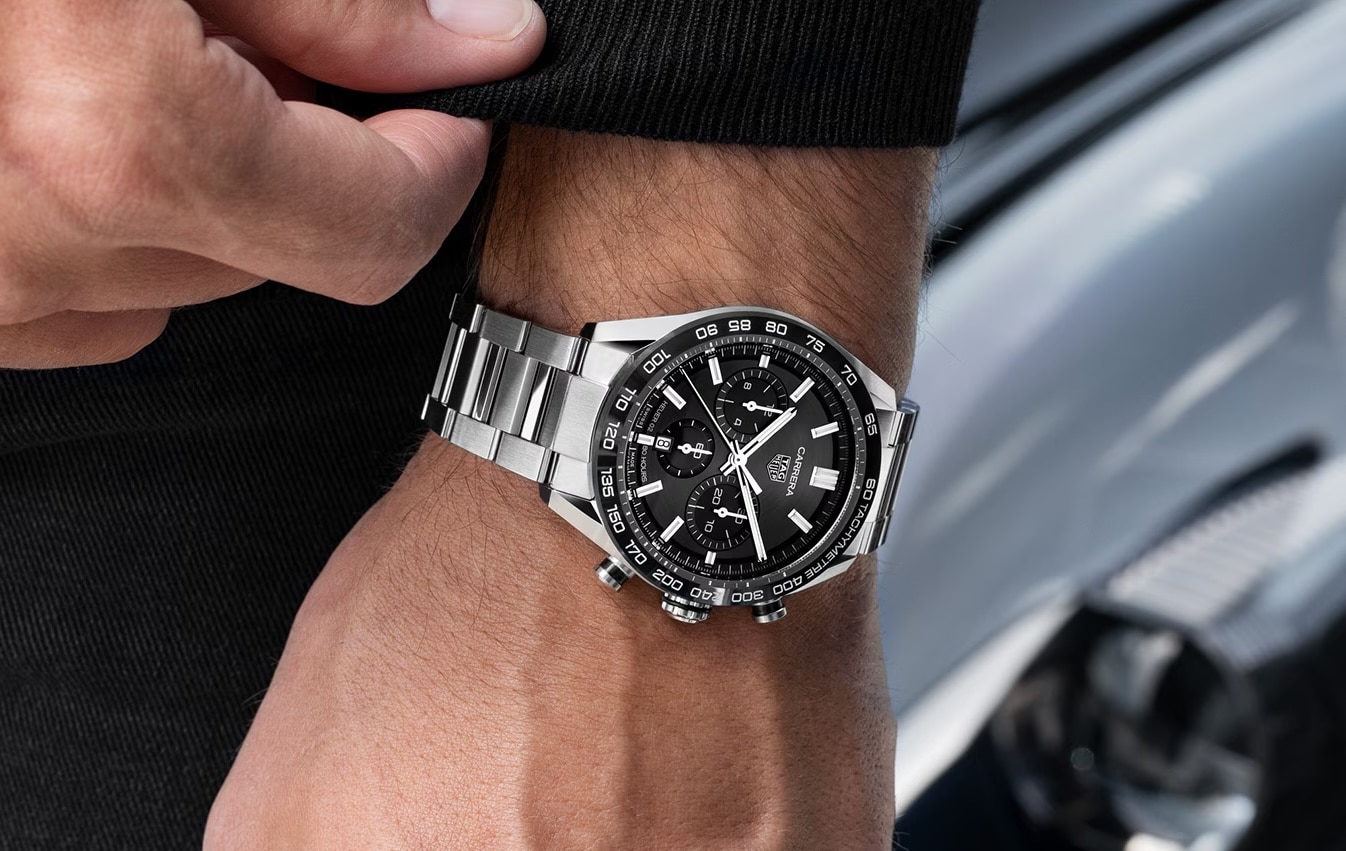
Rolex Daytona
Rolex Daytona represents more than just high-end watchmaking, as it embodies motorsport heritage alongside chronometric

Mechanical watches represent a timeless craft, blending intricate engineering with artistic elegance. Despite technological advancements, these timepieces continue to captivate watch enthusiasts, symbolizing precision and tradition. To ensure their enduring charm and functionality, understanding the art of winding is essential.
The Basics of Mechanical Watch Movements
Mechanical watches operate without batteries, relying instead on a series of gears, springs, and mechanisms powered by manual winding or the natural motion of the wearer’s wrist.
Manual-Winding Watches
Manual-winding watches require the wearer to wind the crown regularly. This action tightens the mainspring inside the watch, storing potential energy that is gradually released to power the watch’s movement. Winding the crown typically involves turning it clockwise until resistance is felt, signaling the mainspring is fully wound.
Automatic Watches
Automatic watches, on the other hand, feature a rotor that winds the mainspring using the motion of the wearer’s wrist. These watches are designed for convenience, winding themselves as they are worn. However, they can also be wound manually when not in use for extended periods.
Understanding the distinction between manual and automatic movements is the first step in maintaining your mechanical watch’s performance and longevity.
Step-by-Step Guide to Winding a Manual-Winding Watch
For those new to owning a manual-winding watch, proper winding is crucial to avoid damaging the mechanism. Follow these steps to wind your watch safely:
Step 1: Remove the Watch from Your Wrist
Always remove your watch before winding. Winding the watch while it’s on your wrist can put undue lateral pressure on the stem, potentially leading to wear or damage.
Step 2: Turn the Crown Clockwise
Hold the watch securely in one hand, and with the other, gently pull out the crown. Begin turning the crown in a clockwise direction. As you wind, you will feel increasing resistance, indicating that the mainspring is tightening.
Step 3: Stop When Resistance Peaks
Continue winding until you feel significant resistance. This resistance signifies that the mainspring is fully wound. Over-winding can damage the movement, so it’s essential to stop at this point.
Step 4: Push the Crown Back
Once winding is complete, push the crown back into its normal position. This action ensures the watch is secure and ready for use.
Common Mistakes to Avoid
Over-Winding
One of the most common mistakes when winding a manual watch is over-winding. When the crown reaches its limit, forcing it further can damage the delicate internal components. To avoid this, always stop winding as soon as resistance is felt.
Winding Without Care
Carelessness during the winding process can result in missed cues from the mechanism. Always wind your watch in a calm, focused manner to ensure its longevity.
The Impact of Proper Winding on Longevity
Regular and proper winding plays a vital role in maintaining your watch’s performance. A well-maintained mechanical watch can last for generations, preserving its precision and value over time. Proper winding ensures consistent timekeeping and reduces the need for frequent recalibration.
Lubrication and Movement Health
Keeping the mainspring active also helps distribute lubricants evenly across the gears, minimizing friction and wear. This is particularly important for watches that are not worn daily, as inactivity can cause the lubricants to settle unevenly.
Use of Watch Winders
For automatic watches, a watch winder can be a practical tool. These devices simulate wrist movement, keeping the watch’s movement active and its lubricants evenly distributed. However, excessive use of a watch winder can lead to unnecessary wear, so it’s important to use them judiciously.
Tips for Maintaining Your Mechanical Watch
– Store Properly: Always store your watch in a clean, dry place, away from extreme temperatures and humidity.
– Service Regularly: Regular servicing by a professional watchmaker ensures that your watch remains in optimal condition.
– Avoid Impact: Protect your watch from heavy impacts, as these can disrupt the delicate internal components.
– Keep It Clean: Gently clean your watch with a soft cloth to maintain its appearance and prevent debris from affecting its movement.
Closing Thoughts
A mechanical watch is more than a time-telling device; it is a testament to craftsmanship and tradition. By mastering the art of winding and following proper maintenance practices, you can ensure your watch remains a cherished heirloom for years to come.
Whether manual or automatic, each mechanical watch tells a story—a story of precision, artistry, and timeless appeal.

𝐋𝐢𝐬𝐭 𝐘𝐨𝐮𝐫 𝐖𝐚𝐭𝐜𝐡 – 𝐂𝐫𝐞𝐚𝐭𝐞 𝐲𝐨𝐮𝐫 𝐝𝐞𝐬𝐭𝐢𝐧𝐲
Considering selling your exquisite luxury watch? At Watches 24, we provide the ideal platform for those looking to part ways with their timeless elegance and precision in second-hand luxury watches. Explore the possibilities with our curated collection, where your legendary timepiece can find a new home, defining someone else’s style and enhancing their presence.
𝐁𝐞𝐢𝐧𝐠 𝐨𝐧 𝐭𝐢𝐦𝐞, 𝐧𝐞𝐯𝐞𝐫 𝐠𝐨𝐞𝐬 𝐨𝐮𝐭 𝐨𝐟 𝐬𝐭𝐲𝐥𝐞
Let your legendary second-hand watch find its next chapter at Watches 24!
For selling inquiries, connect with us:
📞 Call: +27 83 406 6354
📧 Email: info@watches24.co.za
📧 Assistance: help@watches24.co.za
💻 Website: https://watches24.co.za

Rolex Daytona represents more than just high-end watchmaking, as it embodies motorsport heritage alongside chronometric

The Legacy Behind the Platinum Daytona The Rolex Daytona Cosmograph 126506 is one of the

The Racing Heritage Behind the TAG Heuer Carrera One of the most recognisable Swiss timepieces
Join our newsletter
And we’ll send you interesting information on a quarterly basis.
South Africa’s first fully authenticated luxury watch MARKETPLACE. We offer verified authenticity and secure trading for watch collectors and sellers. Shop from our growing collection of watches from dealers and private sellers.
About
Watches24 – Copyright All rights reserved 2022
Design by ip Webcraft
WhatsApp us